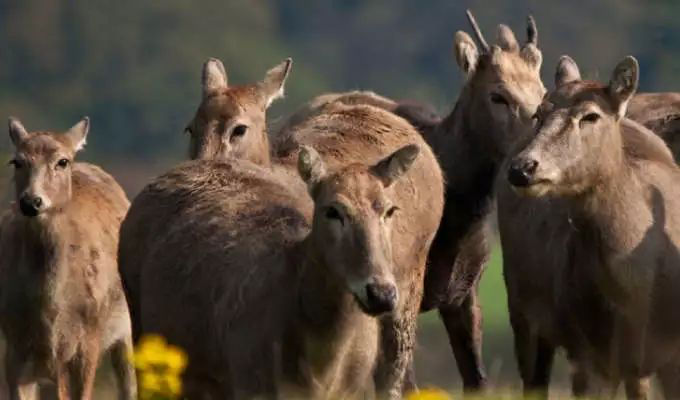Last Thursday, 13 March, 2019, a 1-day-old baby deer was spotted at the Dafeng David’s Deer nature reserve some 300 kilometres east of Nanjing on the coast of Jiangsu in Dafeng, near to Yancheng City.
The “four unlikenesses” of Dafeng David’s Deer go thus; looks like a deer but is not a deer, looks like a horse but is not a horse, looks like a donkey but is not a donkey, and looks like a cow but is not a cow. The unlikely beast is also known as Milu, the Mi-deer, Mi, Pere David’s Deer or Elaphurus Davidianus.
The baby Milu (David’s Deer) is the first newborn to appear at the reserve this year, staff revealed, noting that this is a late arrival for fawns; weighing in at 13 kilograms, the fawn appeared fluffy and bright, reported Xinhua.
The reserve begins its newborn monitoring with the birthing season, generally from March until May, during which time 800 baby Milu are expected.
Originally native to China, 39 deer were gifted to the Milu National Nature Reserve in 1986 by the British government; that number has since grown to 4,556, that which accounts for more than 60 percent of the world’s Milu Deer.
“David’s Deer returning home and the resolution of the Hong Kong issue are two major historical events in current Sino-British relations”, said former British Prime Minister Margaret Thatcher.
David’s Deer are thousands of years old and are as integral to the Chinese animal kingdom as turtles and cranes. As an “auspicious national treasure”, it is often seen in the company of the Chinese water deer and the white Chinese egret.
It has been suggested by ancient literature that David’s Deer population peaked during the Shang and Zhou Dynasties, and date as far back in time as humans themselves, perhaps 3 million years. Today the mystical and peaceful deer roam an area of 2,671 hectares; its plains covered in flowers, mudflats, grass, trees and forests.
Milu Deer Fun Facts
- The David Deer has four stomachs; the rumen, reticulum, omasum, and obomasum.
- The David Deer has webbed feet; a layer of fascia grows between the second and third hooves.
- The David Deer was named after French Missionary, Armand David, a naturalist who first recorded them in 1865.









